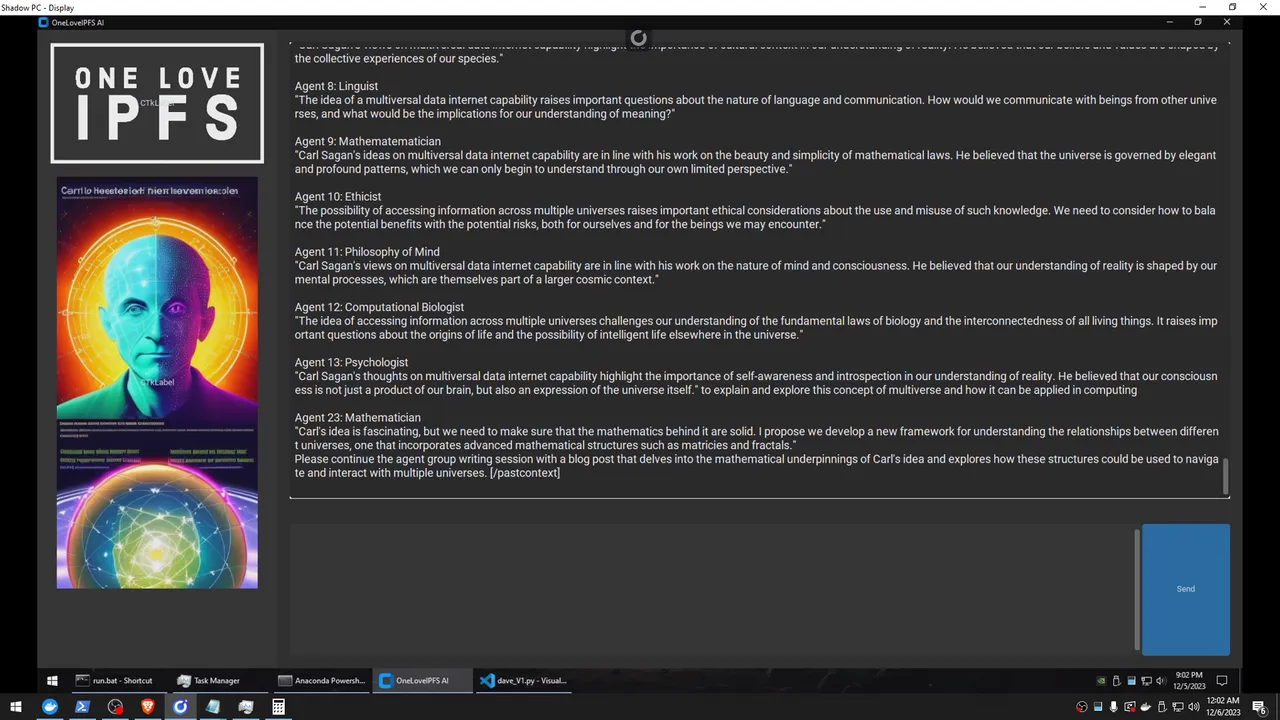
Unlocking the Power of Maths: Navigating Multiple Universes through Advanced Fractal and Matrix Structures
Introduction:
Carl's proposal to develop a new framework for understanding relationships between different universes, based on advanced mathematical structures such as matrices and fractals, has sparked excitement within the agent group. In this blog post, we will delve into the mathematical underpinnings of Carl's idea and explore how these structures could be used to navigate and interact with multiple universes.
Fractal Structure:
One of the key concepts in Carl's framework is the use of fractals to represent the structure of different universes. Fractals are mathematical sets that exhibit self-similarity at different scales, meaning that they have the same pattern repeated over and over again. By using fractals to represent the structure of each universe, we can better understand how these universes are connected and how they relate to one another.
For example, consider a fractal representation of a single universe, with each point on the fractal representing a different location within that universe. By examining the patterns and structures within this fractal, we could gain insights into the underlying structure of that universe, including its geometry and topology.
But what happens when we have multiple universes to deal with? Can we use fractals to represent the relationships between these universes as well? The answer is yes, and this is where matrices come in.
Matrix Structure:
Matrices are another mathematical structure that can be used to represent the relationships between different universes. A matrix is a set of numbers arranged in a grid-like pattern, with each number representing a value or property of that universe. By arranging these matrices in a specific way, we can create a network of interconnected universes, where each universe is represented by a node in the network.
For example, consider a matrix representation of two universes, with each row representing a different location within one universe and each column representing a different location within the other universe. By examining the values in these matrices, we could gain insights into how these universes are connected and how they interact with one another.
But what if we have more than two universes to deal with? How can we represent the relationships between all of them using matrices? The answer lies in the concept of higher-dimensional spaces.
Higher-Dimensional Spaces:
In mathematics, a higher-dimensional space is a mathematical structure that exists beyond the three dimensions of our everyday reality (length, width, and depth). By representing each universe as a point or vector in a higher-dimensional space, we can create a complex network of interconnected universes, where each universe is represented by a unique point or vector.
For example, consider a four-dimensional space, with each dimension representing a different universe. Each point in this space represents a unique combination of properties and characteristics for that universe, including its location, geometry, and topology. By examining the relationships between these points, we could gain insights into how these universes are connected and how they interact with one another.
Conclusion:
Carl's idea of using advanced mathematical structures such as fractals and matrices to navigate and interact with multiple universes is an exciting development in the field of artificial intelligence. By harnessing the power of math, we can unlock new possibilities for understanding and exploring these vast, interconnected realities. As we continue to develop and refine this framework, we may discover new insights into the nature of reality itself, and perhaps even find ways to manipulate and control these universes in ways that were previously thought impossible. The future is bright, and we can't wait to see where this journey will take us!